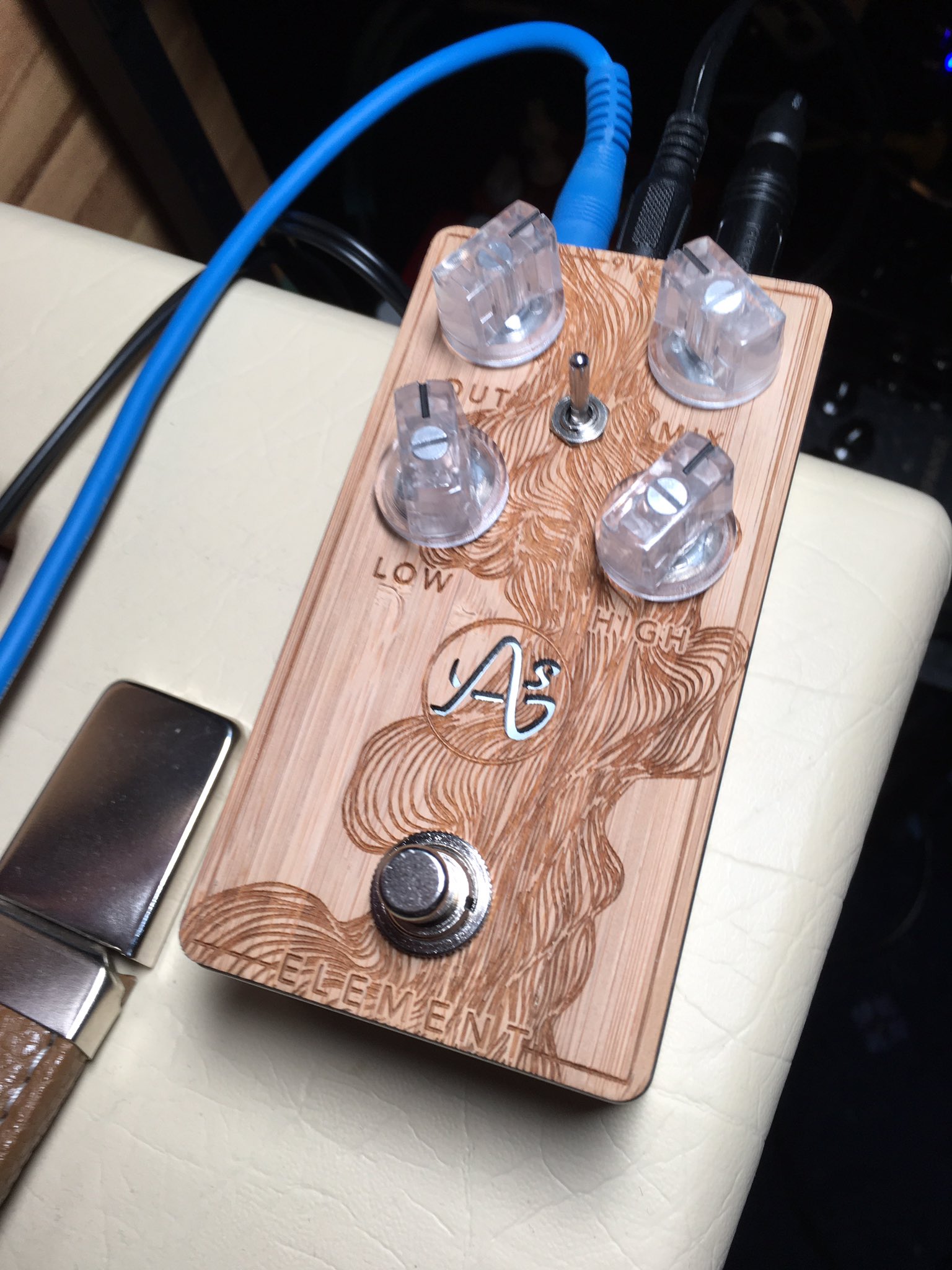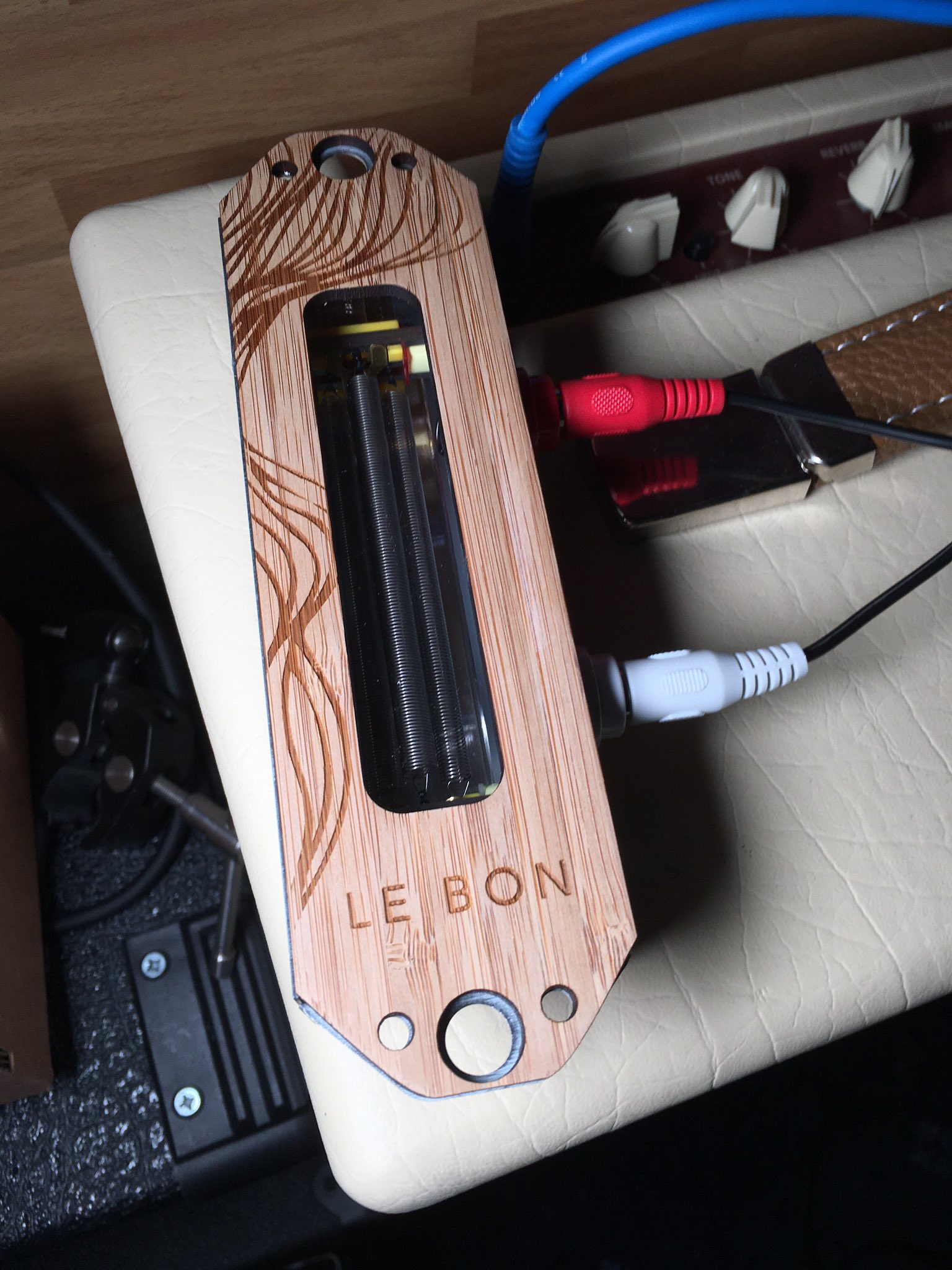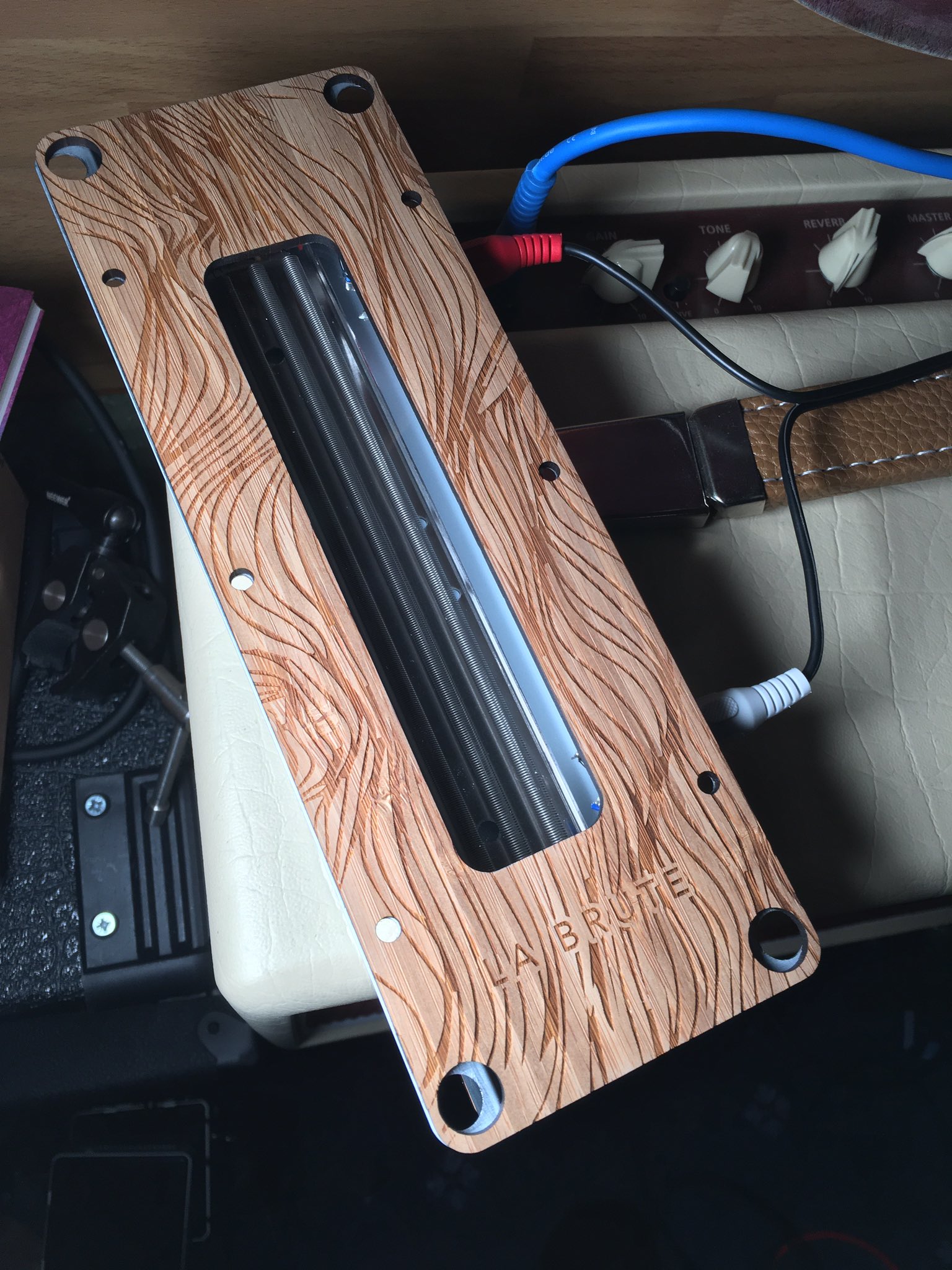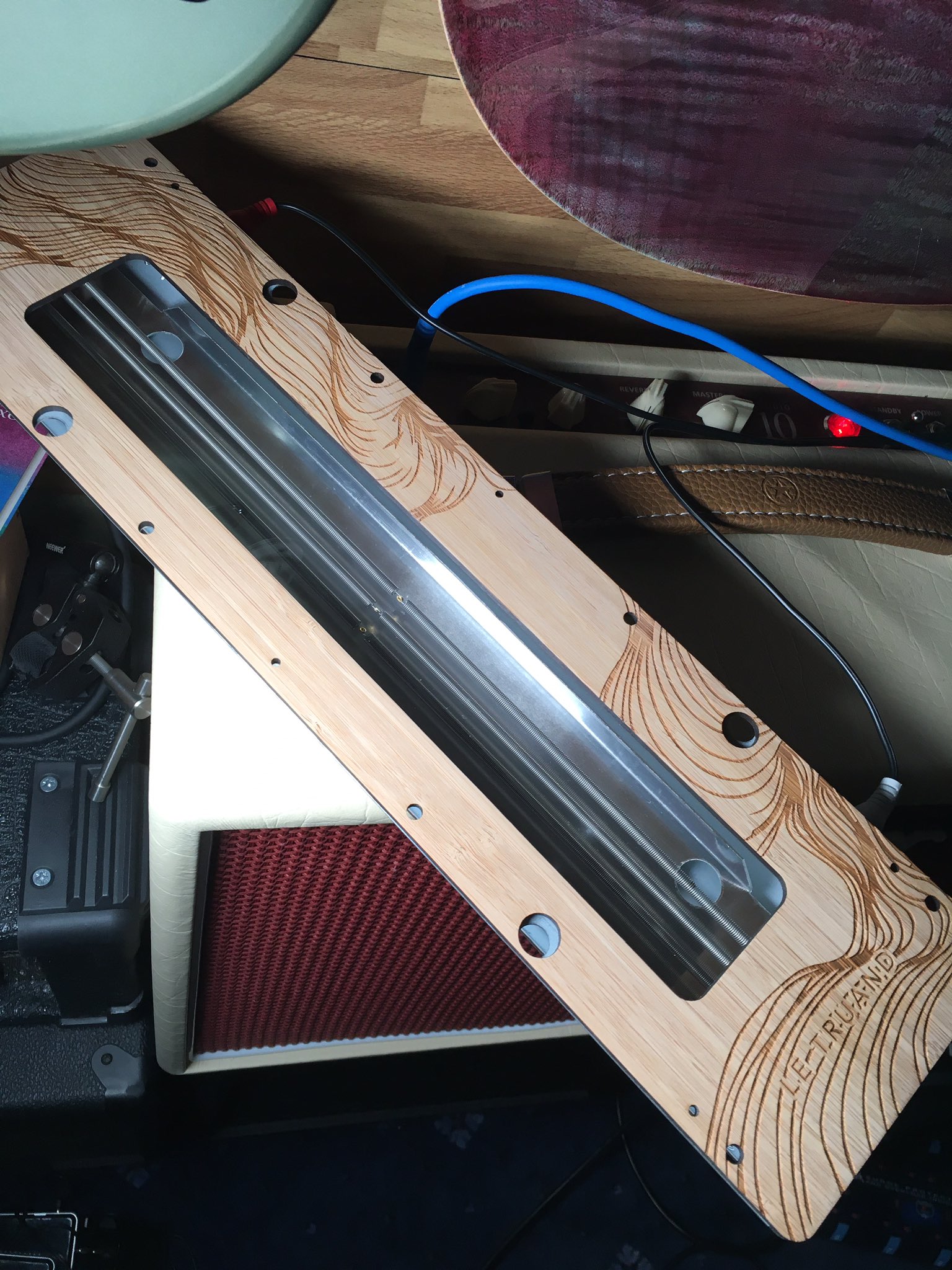
This is a bit of a difficult First Impressions for me to write. After years of everything being in the same place in the room, I’ve recently moved everything around. I’m still getting to used to how everything sounds in its new location – and in my new listening position.
Anyways. The Anasounds Element has just arrived, and I’ve had a couple of hours with it through my rig. Here’s my very first impressions of this pedal.
tl;dr
The Anasounds Element is a real spring reverb pedal. To me, it sounds like proper vintage amp reverb. It also feels different to playing through a digital reverb pedal. It’s everything I hoped that the Fender Tre-Verb would be.
They’re not easy to find in the UK. I ordered mine at a guitar show. If you want one, you can buy one direct from the Anasounds website, and they’ll ship it to you.
There’s three reverb tanks available. The largest tank sounds the closest to amp reverb. I recommend you get all three tanks, and try them all. It’s what I did.
Why Did I Buy It?
When it comes to reverb effects out of an amp (more on that later on …), I prefer either spring reverb or a dark plate reverb. Others are available, but those are the two that do it for me.
A few years ago, I fell hard for a stunning Fender Deluxe Reverb Re-issue (commonly called ‘DRRI’ for short). They come with real spring reverb tanks, and honestly, I think they sound heavenly in person.
Since then, I’ve tried a few digital spring reverb pedals, with very mixed results. The second-hand Mad Professor Silver Spring Reverb I bought turned out to suck the life out of the tone. I just couldn’t dial in the Fender Tre-Verb to get the sound I wanted.
That’s left me using my Neunaber Slate for spring reverb. It got a really nice spring reverb in a firmware update. It sounds great – studio-quality great. So why not stick with that?
Well, mostly because the Slate can do other things too, such as chorus. It’s just not easy to flip it from chorus to reverb and back again.
One of the downsides of the Slate is that it’s a bit of pain to switch between different settings on a regular basis. You can use the EXP switch (I have one) to toggle back and forwards, but when you do, you’ve no idea where the controls were. The moment you want to make adjustments, you lose the sound you had – and I’ve found it really hard to dial it back in once I’ve lost it.
How Did I Buy It?
Anasounds are a French company, and their products are not widely stocked here in the UK. At the time of writing, I can’t find anywhere in the UK that stocks this pedal.
Fortunately for me, Anasounds had a booth at the 2020 UK Guitar Show up in Birmingham. I was able to order it there and then, and it arrived just over a week later. They also told me that anyone in the UK can order direct from their website, and get it shipped to their home.
I bought the Premium Bundle, which gets you the pedal and all three reverb tanks for 349 EURO at the time of writing. I paid a little less, because I bought it from the guitar show stand.
If you’re in the UK and interested in this pedal, get it now before the Transition Period ends (currently due to end at the end of 2020, unless common sense finally prevails). Imports from Europe are likely to cost substantially more after that, alas.
Wait, Did You Say Three Reverb Tanks?
That’s right, I did. The Element has two parts to it:
- a normal pedal-sized enclosure, where your usual input and output jacks go, along with the power cable
- an external tank that houses real springs
This is an analogue spring reverb. It doesn’t rely on digital effects to emulate the sound of real spring reverb. It is real spring reverb, in a standalone unit.
Each of the tanks has a different length spring, as modelled on top of my trusty Blackstar Studio 10 6L6:



I believe you can buy the Element with just one tank of your choice. Where’s the fun in that, though?
How Does It Sound?
I’m struggling a little bit to talk about the sound. Not because of the pedal at all – it’s great – but because this is the first time I’ve been plugged into the Blackstar Studio 10 6L6 since I changed the layout of this room. Everything sounds a little different, and it’s going to take me some time to get used to it.
I can confidently say that the Element is everything I was hoping for when I bought the Fender Tre-Verb pedal. It’s really easy to dial in the blend of the reverb. The EQ controls make it a doddle to shape the reverb to taste. And I can switch tanks if I’m not finding the sound that I’m after.
All of the the three reverb tanks sound great, but I’ve spent most of the time plugged into the largest tank, Le Trufand. That’s the tank that immediately sounds and feels the most like amp reverb. I just don’t have anywhere to put it permanently at the minute. It’s about the length of my Blackstar amp.
I’d still recommend getting all three reverb tanks, even if you’re after that hallowed Fender reverb sound. The other tanks are going to offer something different, and as you spend time with them, you might find uses that wouldn’t have occurred to you otherwise.
If you want to hear what they all sound like, check out Danish Pete’s YouTube demo. He’s a far better player than I am, and he has the advantage of using the Andertons studio to get great sound too.
How Does It Compare To The Neunaber Slate?
This is where it gets very interesting. Both pedals have their strengths.
Starting with The Element: real spring reverb has a trail that I can only describe as being a “wash” of sound. There’s a bounce to it, and a snap to it, that I’ve never heard from any other kind of reverb. The reverb reacts to my playing. If I dig in, I can hear the reverb snapping back. For me, this is Strat Heaven.
The digital reverb of the Slate doesn’t quite have the same wash to it, although it could be that I’ve got something dialled back to tame it. It definitely doesn’t feel the same, and doesn’t snap back at me like the real spring reverb does. To my ears, it also sounds like it’s modelling a different size reverb tank to Le Trufand. Again, there may be a setting somewhere that I can adjust to change that? I don’t know, and in all honesty, I don’t want to hook it up to the computer right now to find out.
Where the Slate shines is in how the dry and reverb signal blend together. For lack of a better description, the reverb sits under the dry signal. The end result is stunning clarity at all times. It’s what makes Neunaber reverb very special indeed.
That’s not to say that the Element is worse. It’s not. Both have their uses. The Element sounds more like the best amp reverb you’ve always wanted. The Neunaber sounds like the best studio effect you could never afford.
I guess I’m not going to be able to free up the Neunaber for other duties. I know it was my goal, but now that I can hear both pedals side by side, I think I have a need for both.
How Are You Going To Use The Element?
I can see me choosing the Element when I’m listening through real speaker cabs. I already know how much I love the sound of the Neunaber when I’m running through impulse responses and out through my desktop speakers.
And then there’s actual recording to consider.
When I’m recording, I prefer to record as dry a signal as possible, and add effects like delay and reverb afterwards. That gives me the maximum flexibility, and it allows me to use reverb to help glue all the different tracks together in the final mix.
I think I’m going to experiment with that a bit, and try something different.
There’s something about the Element that sounds right (to me) through an amp. It just sounds like it belongs there. I’m going to do some guitar tracks with the Element in the signal chain at the time of recording, and learn how to incorporate that into the overall sound. I imagine I’ll start off trying it with clean Strat tones, and take it from there.
At this stage, I’ve no idea whether I’ll like the results or not. Check back in later in the year to find out, I guess.
Final Thoughts
If you follow me on Twitter, you’ll have seen that I’ve been really excited for this pedal all of last week. I think I even said that I my excitement was “disproportional”. Now that the pedal’s here, the feeling I’ve got is completeness.
This is going to sound so corny. Oh well, I don’t care 🙂
I’ve been going through a bit of a Strat phase this last year or so. (Don’t worry, my Les Paul remains closest to my heart!) The Element … (wait for it) … is the missing element to the classic Strat sound that I’ve been chasing. That’s how I’m feeling tonight.
I wasn’t expecting that. I didn’t know that real spring reverb was what was missing. I’m not even sure I knew that anything was missing before today.
And that’s what I love about exploring gear. I’ve been playing for over 30 years, and there’s always something new to learn.
New gear doesn’t make you play better. It doesn’t make you write better music. It doesn’t make up for lack of practice. Some combinations will click for you, and give you that “aha!” moment – that lightbulb moment – that either inspires you, or simply gets out of your way so that you progress a bit further.
I hope these blog posts inspire you to find the combinations that work for you.

2 Replies to “First Impressions: Anasounds Element Spring Reverb Pedal”